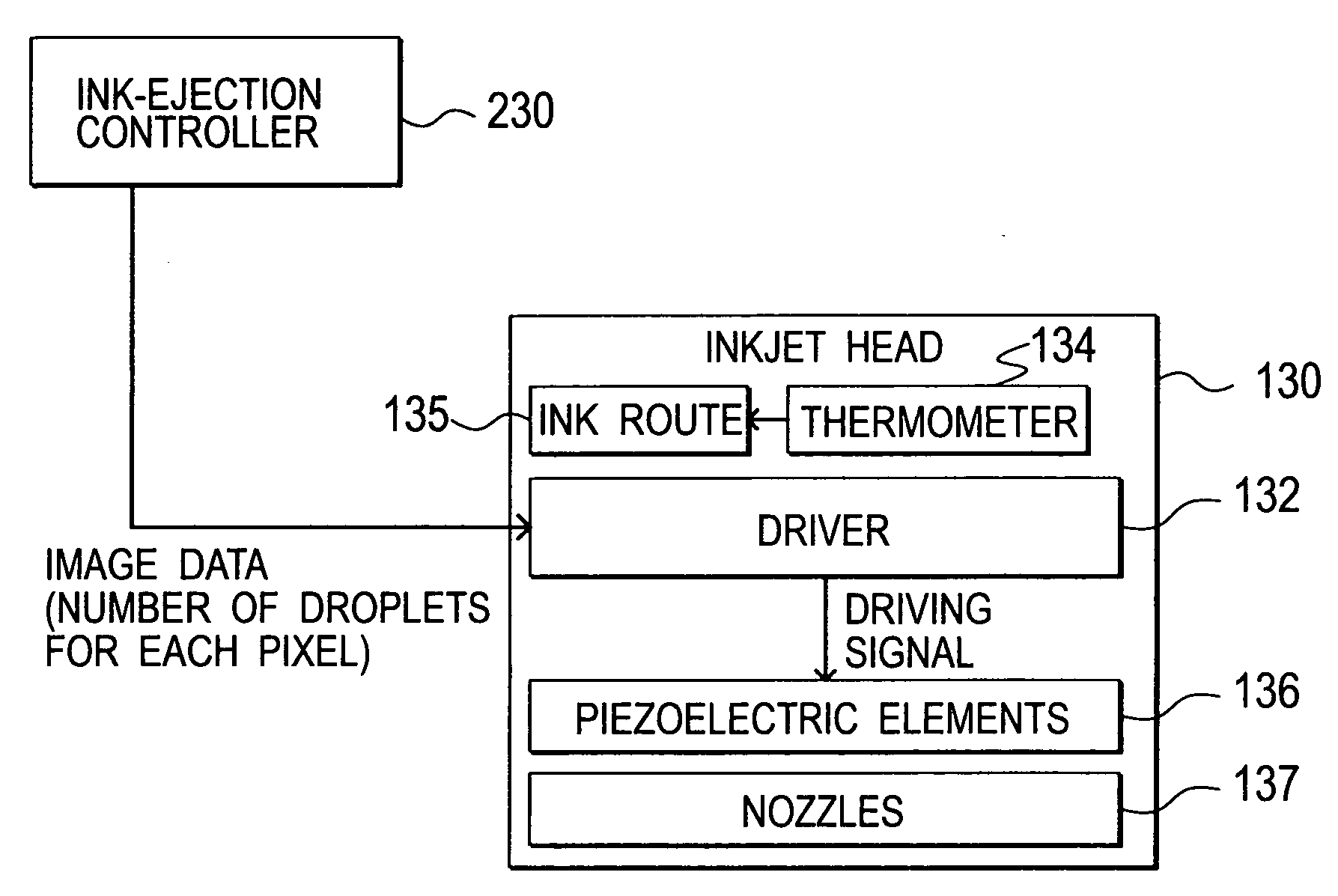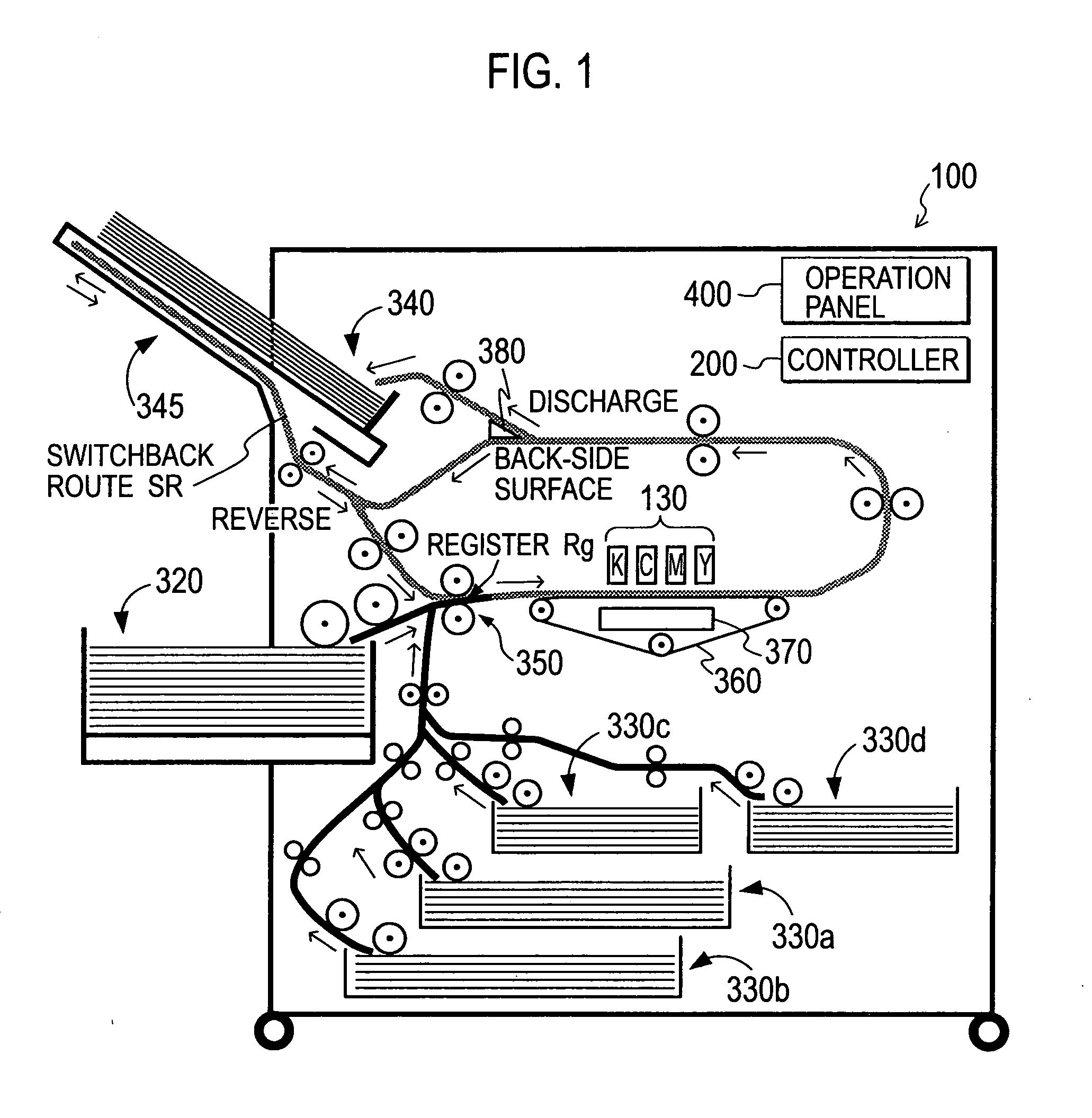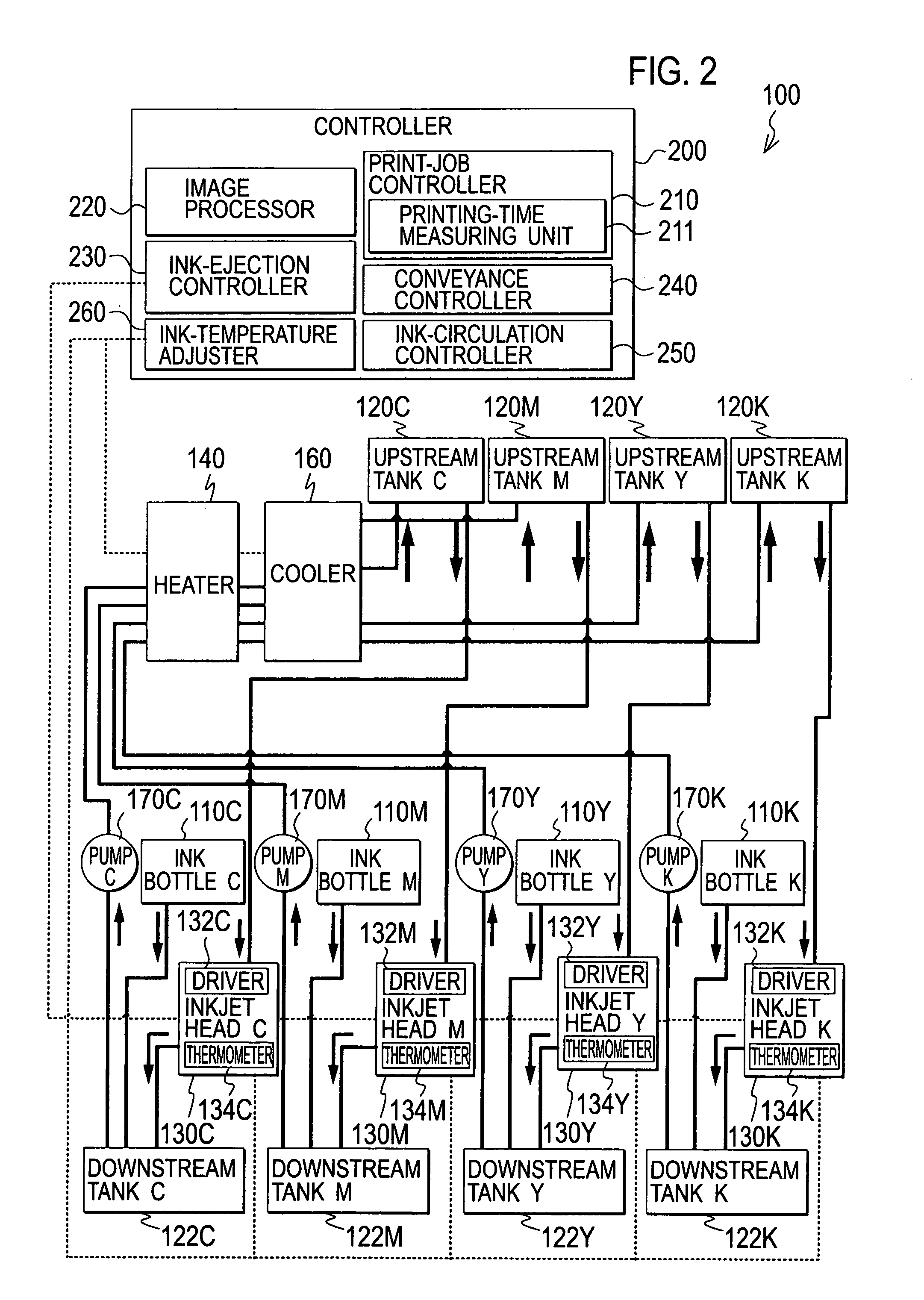Inkjet image-forming apparatus and method for printing
- Summary
- Abstract
- Description
- Claims
- Application Information
AI Technical Summary
Benefits of technology
Problems solved by technology
Method used
Image
Examples
embodiment 1
[0091]FIG. 5 is a flowchart illustrating a print-execution procedure according to the first embodiment of the invention. In the first embodiment, the printing execution under a low-temperature environment is controlled in terms of the print-interruption conditions that “a certain predetermined length of printing time has passed.”
[0092]Firstly, if the measured value of ink temperature is equal to or higher than the first reference temperature, e.g., 25° C., (S101: Yes), it is determined that the ink temperature is within the proper temperature range, and the printing processing for ordinary occasions (hereafter, simply referred to as the “ordinary printing processing”) is executed (S115). In this case, if the ink is being heated, the heating of ink is stopped (S114) before the execution of the printing processing. If the inks of different colors have different measured values of temperature from one another, the determination may be based, for example, on the average value of all the...
modified examples of embodiment 1
[0106]FIG. 9A is a chart illustrating the relationship among the “ink temperature,”“printing actions “heater actions,” and the “driving signals” in the print-execution procedure according to an modified example of the first embodiment of the invention. FIG. 9B is a chart corresponding to FIG. 9A and illustrating the relationship among the “ink temperature,”“printing actions,”“heater actions,” and the “driving signals” in a conventional print-execution procedure. The basic configurations of these charts are similar to those of FIGS. 7A and 7B, so that the description for the basic configurations of FIGS. 9A and 9B will not be given here. As FIG. 7A shows, the first embodiment is an example where the inkjet printer 100 interrupts the printing operation at the time t2, which is the predetermined time length Tm after the time t1. As FIG. 9A shows, the modified example of the first embodiment is an example where of the printing operation is completed at the time t2 which is earlier than ...
embodiment 2
[0108]FIG. 11 is a flowchart illustrating a print-execution procedure according to the second embodiment of the invention. In the second embodiment, the printing execution under a low-temperature environment is controlled in terms of the print-start conditions that “the number of sheets to be printed is equal to or smaller than a predetermined allowable number.”
[0109]Firstly, if the measured value of ink temperature is equal to or higher than the first reference temperature, e.g., 25° C., (S201: Yes), it is determined that the ink temperature is within the proper temperature range, and the ordinary printing processing is executed (S212). In this case, if the ink is being heated, the heating of ink is stopped (S211) before the execution of the printing processing. If the inks of different colors have different measured values of temperature from one another, the determination may be based, for example, on the average value of all the measured values of ink temperature, or on the lowe...
PUM
 Login to View More
Login to View More Abstract
Description
Claims
Application Information
 Login to View More
Login to View More - R&D
- Intellectual Property
- Life Sciences
- Materials
- Tech Scout
- Unparalleled Data Quality
- Higher Quality Content
- 60% Fewer Hallucinations
Browse by: Latest US Patents, China's latest patents, Technical Efficacy Thesaurus, Application Domain, Technology Topic, Popular Technical Reports.
© 2025 PatSnap. All rights reserved.Legal|Privacy policy|Modern Slavery Act Transparency Statement|Sitemap|About US| Contact US: help@patsnap.com



